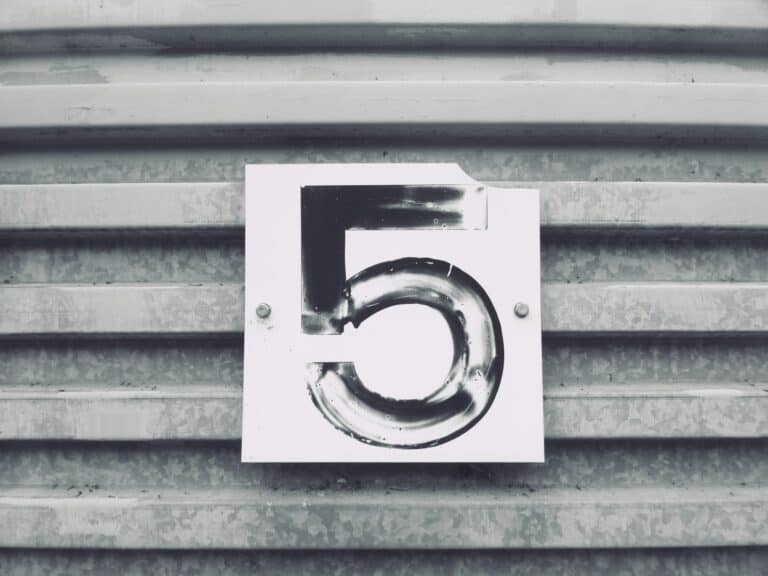Starkey found a 40% drop in their return-for-credit rate using LACE
Interview with Melody Martin, Au.D., Ph.D., Owner, Martin Audiology
Originally published in Audiology Online
Topic: Texas Jam, EarStore and LACE
Paul Dybala: Welcome, everybody. This is Dr. Paul Dybala with Audiology Online and today I have the pleasure of interviewing Dr. Melody Martin of Martin Audiology. She’s agreed to talk about some interesting and exciting things happening with her practice, in addition to some ground-breaking projects that she’s been working on with Starkey and the LACE aural rehab program. Melody, thank you so much for taking time to meet with me and the rest of the Audiology Online readers today.
Melody Martin: Well, I really appreciate the opportunity, Paul, and I appreciate the interest. We’ve got some really exciting things on the horizon here.
Dybala: …The other thing that I wanted to talk with you about today is your experience using the LACE aural rehab program, which is now available through Starkey. Just to start, could you give us a quick overview of what LACE is, maybe for some of our readers who may be less familiar?
Martin: Well absolutely. I’d like to preface this by saying that I’ve been following the development of LACE, really for the last couple of years. We were fortunate that we began actively utilizing the LACE program six months prior to it’s incorporation with the new Starkey nFusion software release at last year’s AAA. For a long time, Paul, I’ve been looking at an aural rehab program that would be clinically effective and efficient for a large-volume practice such as ours. The thing about LACE that I find so exciting is that I think it signals change in our field. It’s a reorientation from product to process, from the audibility of sound to the process of better hearing and understanding.
Beyond the hearing aid fitting the LACE program provides us a platform to help the patient in their journey. It’s that missing piece of the puzzle with the hearing aid fitting. I think that LACE is just the beginning and, in time, there will be other similar programs evolving from it. If you look at trends in gerontology studies in general, I think seniors are becoming more and more ready for it and wanting this type of service.
At last year’s AAA conference, we presented a small in-house study looking at subjective and objective patient outcomes, for patients who participated in the LACE program. We looked at their QuickSIN improvements, their patient satisfaction with their hearing aids, and their overall experience with the LACE program. Those results were so promising that this year we actually did a much larger, better designed study, and the results are amazing. I called Starkey and asked if they could share some internal numbers with their experience of LACE and they did give me permission to share some of these numbers; I think that these numbers really closely support the numbers we’ve found with our last study this year.
Dybala: Can you give us the gist of some of those numbers?
Martin: Sure, let me tell you first what we initially found. In last year’s study, which I presented at AAA, we showed a 4.1 SNR improvement with QuickSIN, and then we used the HHIE and showed a significant improvement with overall patient satisfaction after the implementation of LACE. We also had a custom questionnaire that we gave to patients asking them about their overall LACE experience. Generally, it was very favorable, and patients were very impressed with the professional care they received from us. That was really one of the highlights with their LACE experience. They felt that we were really addressing their needs.
Dybala: That’s excellent. How did this expand when you started looking at the larger scale study and the Starkey numbers?
Martin: Well this year’s study is a six month review of all the patients that purchased hearing aids from our practice from May through December. We have about 628 patients. We are looking at changes in QuickSIN scores, changes in APHAB ratings, and “return-for-credit” rates. Starkey found a 40% drop in the return-for-credit rate with just a few sessions of LACE, versus non LACE users.
Dybala: Wow.
Martin: And a 70% drop in return-for-credit for those who complete LACE, versus non-LACE users.
Dybala: Just so I understand this correctly – even if they didn’t complete the program, there’s a 40% increase. That’s tremendous.
Martin: Exactly. Now, of course, we finished this just a few weeks ago, and I’ve turned the statistics over to the Statistics Department at Baylor University. I don’t know how strong a statement I can make about my study; however, our preliminary findings suggest that our non-LACE return-for-credit rate increases by a factor of four. It quadruples. There are other measures, of course, that we’re looking at and those interactions have yet to be calculated in terms of QuickSIN, APHAB, the degree of hearing loss, and then the actual LACE scores.
I think that the promise that LACE brings to any audiology practice is huge. About the only thing that I’m equally passionate about, besides LACE, is reducing my return-for-credit rate. What if you could cut your returns by a half or three-fourths? Aside from the monetary impact that a return for credit means, I think returns hurt all of us. Ultimately we have failed the patient.
Dybala: Absolutely. Return for credits can happen for a number of reasons, and if we could mitigate some of the small things that may seem like a stumbling block for the patient, for example if they don’t know how to get the battery in, we could really start making some strides. It’s a shame when something like that keeps a person from hearing better, when there are so many positive effects that amplification can provide in a person’s life. The phrase “hearing better is living better” is so true.
Martin: I think it’s important that we have learned that the patient doesn’t necessarily have to finish LACE to receive significant benefit. Dr. Sweetow’s research suggests that there’s a 50% improvement with even just doing 10 of the 20 LACE sessions. I think exposing the patient to the LACE process is what matters. It helps patients adapt to their hearing aids. On top of that, the LACE process gives the audiologist repeated opportunities for additional counseling and working with patient expectation.
Our LACE process uses objective and subjective measures, but you don’t have to. You don’t have to use the QuickSIN, you don’t have to use the APHAB or HHIE, but whatever you use, you’re showing the patient that you’re listening, and you’re assessing what they need, and you’re trying to do your best to address those needs.
Dybala: I think some professionals may have a difficult time understanding exactly what the aural rehabilitation process entails, if they haven’t been using LACE. Give an example of what you do in your office to get people through that, because I know that you have some people that possibly use LACE at home or some people that come into the office. What’s the basic structure that you use for that?
Martin: Well, we try to encourage all of our patients to participate in LACE. From the beginning hearing consultation, we counsel them not only about appropriate amplification, but that better hearing is a process. You need to work with your brain, if you will, to help give proper meaning to all the new sounds it will be receiving with amplification.
We have two options for participating in LACE. For those patients who would really prefer to do the training in their home setting but don’t have computers, we have what we call loaner laptops, which are very basic laptops with keyboards.
For those patients who don’t have even basic computer literacy, or for those who would simply feel more comfortable, we encourage them to come to our LACE lab, where we have custom keyboards, so that participation is very easy. Instead of a senior staring at an intimidating computer keyboard, these custom keyboards allow the user to either press “Play” or “No” or “Yes” or “Next.” That really simplifies things.
We have LACE labs in all of our facilities, which is very promising for our patients. We have found that patients that can actually come in, even just for a few follow-up visits, tend to do better with what we call a LACE coach. That’s just somebody sitting there periodically telling them, “Good job. Press on,” that type of thing. Then the audiologist can address any kinds of questions that may arise from their session. It creates a platform, or a prompt, if you will, for the audiologist to provide additional counseling.
Dybala: That kind of flexibility is really great for making LACE available to all patients. We’re actually almost out of time, so I do want to say that I really appreciate the time you’ve taken to sit down with me and talk about some of the exciting things, really innovative things that you’ve been doing with Martin Audiology.
Again, Melody, thank you so much. I think we all learned quite a bit today.
Martin: Absolutely. I appreciate the opportunity.
About Martin Audiology
Family-Owned, Nationally-Known. First established in 1993 by Dr. Melody & Curtis Martin, Martin Audiology has grown from a small family practice to one of the premier audiology clinics in the nation. Named #1 Hearing Center in Central Texas for four straight years in a row, Martin Audiology has experience great success and growth at all of their offices in Waco, Temple, Killeen, & Georgetown. As Central Texas’ largest, most experienced, independent audiology clinic, Martin Audiology offers competitively-priced state-of-the-art products and board-certified expertise.
About Starkey Labs
Privately held Starkey Laboratories, Inc. is a consumer technology company headquartered in Eden Prairie, Minn. The company is recognized for its innovative design, development, and distribution of comprehensive digital listening systems. Founded in 1967, Starkey currently has more than 4,000 employees and facilities in 18 countries. Divisions operating under the Starkey Laboratories family of companies include Audibel, Micro-Tech, NuEar, Omni, Qualitone, and Starkey.
Visit the Starkey Web Channel on Audiology Online at www.audiologyonline.com/channels/starkey.asp or go to the Starkey website at www.starkey.com/







